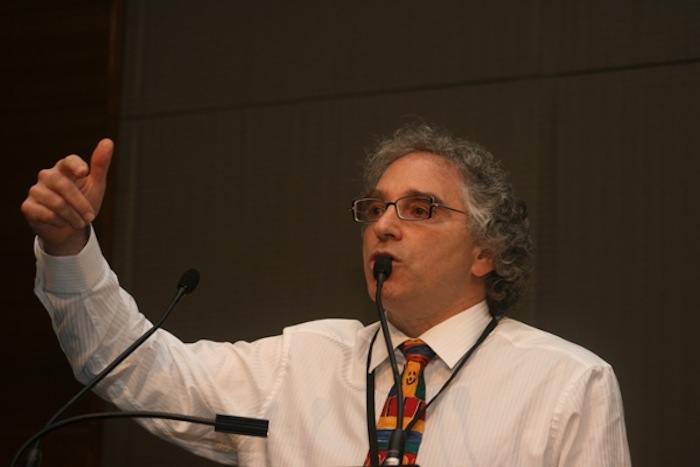Interview series: Barry Goldstein of PIRSA & AGEG
In my interview series I had the chance to do an interview with Barry Goldstein from South Australian PIRSA and the Australian Geothermal Energy Group, truly one of the most outspoken advocates for geothermal energy.
Following through with interviews of participants to the GRC/ GEA event in Sacramento, California in October, I had the chance to interview Barry Goldstein of Australia. Barry is South Australia’s Director for Petroleum & Geothermal within PIRSA, the chair of the Australian Geothermal Energy Group and member of various groups and committees related to his work.
He has 34 years international experience in the energy business and has been a strong and outspoken advocate for geothermal energy and in particular for the Australian geothermal sector.
Barry will be part of Team Australia, that will be representing the Australian geothermal energy industry at the GEA Trade Show in Sacramento. I am very pleased he could answer a few questions for ThinkGeoEnergy and I very much look forward meeting Barry in Sacramento.
What is the role of your institution and key activities?
Primary Industries & Resources – South Australia (PIRSA) is a State-based games keeper and poacher organisation.
Are any members of the Australian Geothermal Energy Group (AGEG) active in the United States?
The AGEG’s international members with considerable markets and operations in the US include: Schlumberger, Halliburton, Google, Ernst & Young, KPMG, Marubeni-Itochu Tubulars, Mitsubishi Heavy Industries, Sumitomo, ThermaSource and Weatherford.
What are currently key markets for your member companies and where are they active?
Most of the AGEG’s 84 industry organisational members are focused on developing geothermal energy from rocks at depths of 2 to 5+ km for power and direct use, or providing services and equipment for such enterprises. A few company members are focused on the deployment of geothermal heat pumps. Our research members include twelve universities from across Australia, the Commonwealth Science and Industry Research Organisation (CSIRO), and Geoscience Australia (GA). Our government agency members include policy makers, regulators and geologic surveys from every State, the Northern Territory and Australia’s Federal Government
What do you think holds back speedier development of geothermal energy projects globally?
In regard to low temperature direct use, such as GSHP and HVAC, just-in-time competitive supply chains would do wonders for exponential growth in both the use and the brand for geothermal energy. I surmise local demand caps growth in traditional hunting grounds New Zealand and Iceland. The real opportunity for global exponential growth will come from proving in several geologic settings that Enhanced (Engineered) Geothermal Systems can be reliably tapped profitably, and in the early stages, part of the profits will inevitably need be underpinned with government grants, and market mechanisms that deliver the lowest emissions. That will take considerable investment and success in pilot demonstration projects to reduce both below-ground and above-ground risks
What are your expectations for the event in Sacramento?
The GRC meetings are always great forums for the sharing of information and the pairing of projects with investors and services. I expect no less in Sacramento
Who do you look forward meeting at the trade show?
Too many to name, and too impolite to name some but not others. With that caveat out of the way, I always look forward to catching up with Bob and Jared Potter, Subir Sanyal, Jeff Tester, Lucien Bronicki, Susan Petty, Roland Horne, Charles Baron, people from the National Labs and the DoE, I’ll stop there for now.


















